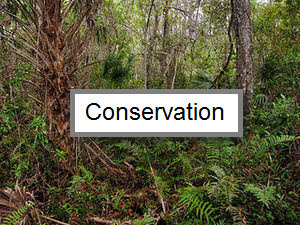How do you identify wild orchids that might you come across while going for a walk or trekking, from other plants? Let this article help you out. Large amount of variation is seen in flowers as well as the leaves/ stem/roots (vegetative structures) of the orchids. However, researchers differ on this, with some stating flowers being more diverse than the vegetative structures, while the other group opines vegetative structure to be more diverse.
To identify orchids from other wild plants you can keep in mind a few general points, which can help in recognising some common orchids. There are the two major groups of orchids, epiphytes and terrestrials. Each has been taken up separately.
Epiphytes: These types of orchids are found growing on trees/poles, sometimes even on overhanging wires! Majority of orchids belong to this group and are mostly found in the tropics. In the wild, these orchids are often confused with other epiphytes such as lianas, ferns etc. I have faced this problem myself, while searching orchids in the tropical rainforests of North-Eastern India. So the general key to identifying epiphytic orchids is:
1. Identifying from the vegetative structures: Many orchids have bulbous structure from which single or at the most two leaves arise. Ferns have rhizomes which give out leaves in large numbers. The rhizomes of the ferns are very different looking from the bulbous structures of orchids. Orchid bulbs are generally shiny or sheathed, while the rhizomes of the ferns are mostly covered with hairy structures and are rough in texture. Some orchids have stem like structures from which leaves arise in a row, these can be confused with the lianas. The difference between these two is that in winter lianas remains green whereas the orchids mostly shed their leaves, the stem shrivels and take on a wrinkled look. Lianas are vines, the stem is flexible unlike the rigid stem of orchids. Bunches of mistletoe (in temperate zones) might look like orchids from a distance, but orchids are not parasitic like the mistletoe.
2. Identifying from the flowers: Ferns do not flower; they have leaf fronds, period. Lianas also have very colourful flowers like orchids. The differently shaped third petal, called the labellum, of the orchid flower differentiates it from almost all other flowers.
Terrestrials: You will find these are orchids growing in soil, on rocks, under the shade of trees or in open sunny grasslands.
1. Identifying terrestrial orchids is somewhat more difficult, unless it is flowering. Otherwise, the vegetative plant (without flower) resembles other plants like bromeliads, philodendrons, etc. Most terrestrial orchids have underground rhizome (stem like structure), which gives out leaves so that the leaves appear to be comes out of the ground. The leaves are mostly sheathed (like in lilies); though, some orchids have alternately arranged leaves too.
2. Flowers of terrestrial orchids also can be identified from the labellum as in the epiphytic orchids.
Note
When you see an orchid flowering in wild, please do not pluck it. Instead leave it for others to see and enjoy too. Take a picture instead. Also, be informed that in many countries it is illegal to uproot wild plants from their natural habitat. Furthermore, once a wild plant is uprooted from its native habitat, it is sure to die sooner than later.

Identifying Orchids
Conservation Speciesby Anu Dharmani
Originally published in BellaOnline
Posted by Sys Admin almost 9 years ago.Article Blog Article Index
Share on Social Media:
New Topics
- David George asked question Odom's Fascination - an unusual orchid in category General Discussion
- Carol Holdren asked question Grow Tent in the Garage in category General Discussion
- David George asked question rlc Caotan Beauty found at Home Depot in category Cattleya Alliance
- Kristin Dorris asked question Odontocidium Orchid fungus? in category General Discussion
- Maria Fernandez asked question Wild. Lisa Devos in category Dendrobiums
New Comments
- Carol Holdren commented on topic "rlc Caotan Beauty found at Home Depot " by David George
- Carol Holdren commented on topic "Odom's Fascination - an unusual orchid" by David George
- Dr. Florian Wolf commented on topic "Wild. Lisa Devos" by Maria Fernandez
- Michael Valcarcel commented on member plant Rlc. Chief Takanaka by Walceli Muniz Valverde
- Michael Valcarcel commented on member plant Rlc. Montana Spirit by Michael Valcarcel
- Michael Valcarcel commented on member plant Ctt. Blazing Sun by Michael Valcarcel
- Michael Valcarcel commented on member plant Bc. Spotted Clown by Michael Valcarcel
- Maria Skrypnyk commented on member plant Yamadara Redland Sunset by Maria Skrypnyk
- André Pessina commented on topic "Odontocidium Orchid fungus?" by Kristin Dorris
- Linda Hartman commented on topic "Image of a plant please" by Leshya Perkins
- Paul Reavis commented on orchid Milt. Kismet
- Christiaan Viljoen commented on member plant Psh. fragrans by Christiaan Viljoen
- Christiaan Viljoen commented on member plant Z. maculatum by Christiaan Viljoen
- Christiaan Viljoen commented on member plant C. Gaskell-Pumila 'Azure Star' by Christiaan Viljoen
- Robert H. Findlay commented on member plant Rlc. Joy Sokabe var. Volcano Queen by Sally K
- James Lunsford commented on member plant Lc. Sagarik Wax 'African Beauty AMO/AOS x Blc. Cherry Suisse'Kauai' HCC/AOS var. Cattlyea 'Hybrid ' by James Lunsford
- John Varigos commented on orchid Bulb. schwarzii
- Linda Hartman commented on topic "Issue with Blc. Ben O'Neil "Jubilee" by Glenda Ratliff
- Henry Shaw commented on member plant Ons. Catatante 'Los Roble' by Henry Shaw
- Mary Lane commented on member plant Den. Tianmu Canary by Terre Moore